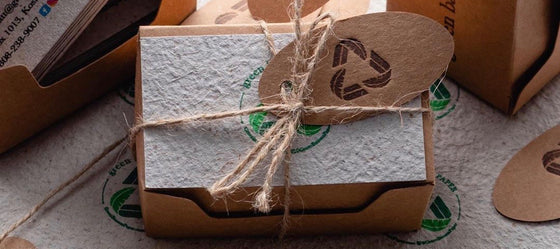![What Is Sustainable Manufacturing? [Infographic]](http://greenbananapaper.com/cdn/shop/articles/sustainable-manufacturing-blog-featured-image_2048x.jpg?v=1497238641)
It’s an exciting time in the eco-fashion world. Companies such as Project Just and Fashion Revolution are keeping consumers better informed about the environmental and social impacts of their favorite brands.
A growing number of consumers are beginning to expect a lot more out of retailers and manufacturers with the strengthening fair trade, cruelty-free and veganism social movements. Understanding what sustainable manufacturing is and why it is important is the first step to becoming an educated consumer.
Check out the infographic below to get a glimpse of how Green Banana Paper is implementing sound manufacturing practices and processes to advance sustainable manufacturing and economic development in Micronesia.As defined by the U.S. Environmental Protection Agency, “Sustainable manufacturing is the creation of manufactured products through economically-sound processes that minimize negative environmental impacts while conserving energy and natural resources. Sustainable manufacturing also enhances employee, community and product safety.”

According to a report by the Danish Fashion Institute, fashion is the world's second worst polluter after the oil industry. In Kanpur, leather tanneries dump an estimated 50 million liters of chemical waste every day in the Ganges River, contaminating crops and running water. These impacts weigh heavily on the minds of consumers who are increasingly aware of the true cost of consumerism.
To achieve sustainable manufacturing businesses need to review and improve their processes to recapture and reduce waste. Even the heaviest polluters, including the chromium tanneries could be capturing and reusing used chromium to reduce the amount of direct waste into the water supply.
As if direct dumping was not enough of a long term environmental and health issue, vast swaths of rainforest are being cleared for agricultural use. The increase of carbon emissions does not only come from the billowing smoke stacks of factories, but in the cultivation of raw material (plant or animal based). Agriculture is now one of the leading causes of rainforest deforestation as farmers take to slash-and-burn techniques to clear land for grazing cattle.
A consumer good is ultimately the sum of all inputs required to make a final product. The natural resources required to produce an item include the energy, water, material and equipment necessary to complete manufacturing.
Taking each input into consideration and applying sustainable business practices is of paramount importance to achieving sustainable manufacturing. At Green Banana Paper the fibers are dried using sunlight and wind before being processed, this reduces the energy it would take to power industrial dryers or fans.
Rainwater is also captured and stored in giant holding tanks, boiled with the fibers and soda ash and then treated to achieve a neutral pH before re-entering the soil. Recycled printer paper is used for some blends of banana fiber paper for items like business cards. These are just a few examples of how each individual input can be broken down and improved for green manufacturing.
True sustainable manufacturing practices go beyond environmental impact assessment and consider the working conditions and lives of the people who work tirelessly to produce consumer goods. One of the most unappreciated aspects of industrial manufacturing are the extreme conditions that workers are subjected to in the process of converting raw materials into useable textiles or components.
Although global consumption rates continue to rise, the manufacturing industry as a percentage of U.S. GDP has dropped from 30% in the 1950’s to as little as 12% in 2008. To keep prices low and meet demand, fashion giants now outsource 97 percent of production, paying workers as little as $1 a day.
At one leather tannery in Bangladesh, children as young as 10 years old can be seen operating heavy machinery despite laws prohibiting anyone below the age of 18 working in a tannery. Other workers are routinely working barefoot in toxic chromium vats to chemically tan and treat the hides without proper safety equipment.
The laundry list of health issues caused by these conditions and practices contribute to a shortened life expectancy for a tannery worker of less than 50 years. The workers have little to no options for recourse against their employers for fear of losing their job or worse.
As if it wasn’t hard enough to know where our goods originate from, “made in” country markings for consumer products still do not require labeling for the origin of raw materials. That’s right. Your “Made in Italy” leather wallet is not required to divulge where the leather was tanned and processed, just where it was sewn.
It is ultimately up to us, the consumer, to abolish ignorance and to educate ourselves before patronizing certain brands. Review your favorite fashion brands and see if they provide the transparency and information on where their goods really come from.
If you found this article or infographic useful and educational consider sharing it with a single click on social media below.
Comments will be approved before showing up.
This is the first piece in a segment examining the UN Sustainable Development Goals (SDGs) and Green Banana Paper. All information about the SDGs is based on information from the Sustainable Development Goals Knowledge Platform.

Custom business cards have become one of our most popular items, particularly with businessmen and women who understand the importance of a smaller carbon footprint.